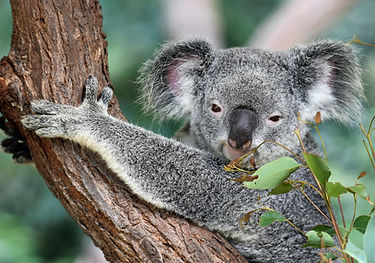
Publications
Scientific papers
Below is a list of my scientific (peer-reviewed) publications. I only include articles that have been accepted and are available online. Many others are undergoing peer review, so I suggest following me on social media or checking back regularly to keep up with what is happening.
If you have any questions or ideas for new articles, don't
hesitate to get in touch. Otherwise, enjoy.

Increasing temperatures trigger shifts in activity patterns and temporal partitioning in a large carnivore guild
Rafiq, K., et al.; Ecology and Evolution; 2023
Changing activity timings is a key strategy animals can use to avoid suboptimal environmental conditions and competitors. We show that high temperatures increase temporal overlap between competing large African carnivores.

SensorDrop: A system to remotely detach individual sensors from wildlife tracking collars
Rafiq, K., et al.; Ecology and Evolution; 2023
We present an open-source system (SensorDrop) for remotely detaching individual sensors from wildlife collars. SensorDrop facilitates the retrieval of power-intensive sensors non-invasively.

Climate change as a global amplifier of conflict
Abrahms, B..., Rafiq, K., et al.; Nature Climate Change; 2023
Global change is altering our interactions with species across systems. Compiling studies from across the planet, we present a framework on the ways human-wildlife conflict is being amplified by climate change.

Long-term, climate-driven phenological shift in a tropical large carnivore
Abrahms, B., Rafiq, K., Jordan, N.R., et al.; PNAS; 2022
As a result of climate change, many species are shifting their timing of important life history events. We document a major climate-induced shift in reproductive time in a large carnivore: the African Wild Dog.

WildWID: An open-source active RFID system for wildlife research
Rafiq, K., Appleby, R., Edgar, J., et al.; Methods in Ecol. and Evol.; 2021
RFID tags are amongst the smallest animal-borne sensors being used in wildlife studies. We describe and provide the design files for a bespoke open-source RFID tag for researchers to build upon.

Scent marking strategies of a solitary carnivore: boundary and road scent marking in the leopard
Rafiq, K., Jordan, N.R., Meloro, C., et al.; Animal Behaviour; 2020
Scent communication is widespread in the animal kingdom; yet little is known of leopard scent marking behaviours. We investigate leopard scent marking across home ranges and road networks in Botswana.

Spatio-temporal factors impacting encounter occurrences between leopards and African predators
Rafiq, K., Jordan, N.R., Wilson, A.M., et al.; Journal of Zoology; 2019
Meetings between predators can be difficult to document and study. We used custom GPS radio-collars on leopards and other large African predators to explore some of the factors leading to encounters.

Tourist photographs as a scalable framework for wildlife monitoring within protected areas
Rafiq, K., Bryce, C., Miller, D.A.W., et al.; Current Biology; 2019
Protected areas are a cornerstone of conservation; yet many lack the resources for basic monitoring. We show that in tourism areas, tourist photographs could be used for low-cost wildlife monitoring.

OpenDropOff: An open‐source, low‐cost drop‐off unit for animal‐borne devices
Rafiq, K., Appleby, R., Edgar J.P., et al.; Methods in Ecol. and Evol.; 2019
Animal-Borne sensors are being increasingly used in wildlife research and conservation. We introduce and provide the design files for a drop-off device for remotely removing tracking collars from animals.

Do mammals have a world wide web of interspecific signals?
Apps, P.A., Rafiq, K., McNutt, J.W.; Chemical Signals in Vertebrates; 2019
There is a growing body of evidence that carnivores use scent marks to communicate with other species. We investigate and discuss between species communication using examples from northern Botswana.

Movement patterns and athletic performance of leopards in the Okavango Delta
Hubel, T.Y., Golabek., K.A., Rafiq, K., et al.; Proc. R. Soc. B.; 2018
Despite being the most widespread of all big cats, relatively little was known of leopard movement and athletic performance. We investigate the movement and athleticism of leopards in northern Botswana.

Camera trap records of groups of ten and eleven honey badgers Mellivora capensis in northern Botswana,
Apps, P.A., Rafiq, K., McNutt, J.W.; Small Carnivore Conservation; 2018
Honey badgers are wide ranging mustelids that are typically solitary and sometimes seen in pairs or trios. We present observations of groups of > ten honey badgers travelling together in northern Botswana.

